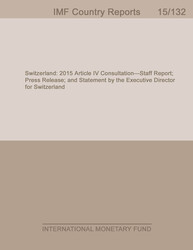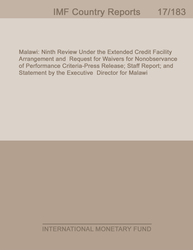
Switzerland: 2015 Article IV Consultation-Staff Report; Press Release; and Statement by the Executive Director for Switzerland
KEY ISSUES Switzerland has once again had to contend with capital flow volatility. Following the exit from the exchange rate floor in mid-January 2015 and the subsequent appreciation of the franc, the Swiss economy faces exchange rate overvaluation, slower near-term growth, and deflation. Both growth and inflation are expected to recover gradually over the medium term—to around 2 percent and 1 percent, respectively—as the economy adjusts to the shock. However, this relatively benign scenario is subject to important risks, most notably that operating in a low inflation environment may prove more difficult than assumed in the central scenario. Monetary and fiscal policies can support faster adjustment and reduce risks. Further monetary easing via purchases of (mainly foreign) assets would help limit the near-term growth slowdown, reduce risks related to low inflation, and lessen franc overvaluation. Central bank communication should also be geared toward building an understanding of policy objectives and ensuring that inflation expectations do not become entrenched at low levels. Scope for fiscal policy to support aggregate demand is limited by Switzerland's fiscal rule and the small, open nature of Switzerland's economy. That said, fiscal policy can still support recovery by allowing automatic stabilizers to operate freely, as allowed under the rule. The rule's escape clause should be triggered in the event of a severe downturn to allow discretionary fiscal stimulus, as monetary policy would likely be overburdened in such a scenario. The financial sector reform agenda should also be completed. The Swiss authorities have made important progress in this regard, and further steps are planned. Specific priorities, as laid out in last year's Financial Sector Assessment Program (FSAP) update, include raising the leverage ratios of the two large international banks, increasing public disclosure of information on risk weights, reforming FINMA's use of external auditors, overhauling deposit insurance, and containing housing- and mortgage-related risks. Over the medium term, Switzerland faces a number of structural challenges; the authorities' ongoing efforts to address them are welcome and should continue. Priorities include adopting proposed pension reforms to ensure the sustainability of the system for future generations; completing ongoing reforms of corporate taxation and financial controls in ways that ensure full compliance with international initiatives aimed at limiting money laundering and cross-border tax evasion and avoidance; and reducing uncertainties related to future immigration policies and relations with the European Union.
Publication date: May 2015
ISBN: 9781513553603
$18.00
Add to Cart by clicking price of the language and format you'd like to purchase
Available Languages and Formats
| English |
Prices in red indicate formats that are not yet available but are forthcoming.
Topics covered in this book
This title contains information about the following subjects.
Click on a subject if you would like to see other titles with the same subjects.
Money and Monetary Policy , International - Economics , Public Policy ,
Also of interest
Summary
Copyright © 2010 - 2024
Powered by:
AIDC



